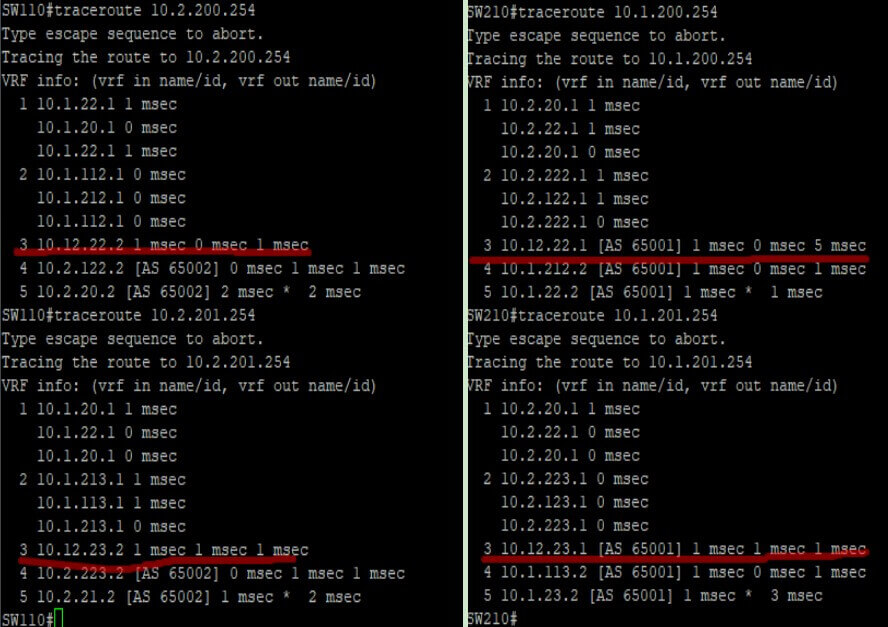Exam report
TS
Original TS2
The phenomenon and answer of the TS2 version that we practiced are basically the same, just to say a few points that are different from the version but the previous exam reports mentioned these points. In conclusion, the previous version of the exam report either consolidated or standalone should be no problem.
What we need to be paid attention is in the lease of the DHCP pool and the passive in the router OSPF. Configure as no passive if possible. There are three places to pay attention for Q1. They are R40, R41, SW400 / SW401, secondly R30, SW300 / SW301 of Q8 and finally the R10 and SW111 of Q2. I tested this at the time of the exam. When I didn't configure as “no lease”, it didn't affect it when I start the exam but it may not work even ping or trace route at the end of the exam.
Q3. BGP2
The 3rd hop of the phenomenon map of the exam is not the same as the version. The map of the examination room is as follows:
The third line of SW110 to DC2 has no AS number and the third AS number of SW210 to DC1 is 65001.
The solution to this is to “network” e0/0 in the BGP of R12 and R13, pay attention to the mask.
This question is needed to see the phenomenon map of during the exam. If SW210 goes to DC1, the third hop does not have an AS number and SW110 goes to DC2 and the third hop is AS65002, then the “network” e0/0 interface address on R22 and R23 is required.
The reason why there is this problem is because if there is no “network”, there is no detailed routing information of the third hop address on R12 and R13. Therefore, the addresses of 10.12.22.2 and 10.12.23.2 will be classified as the default route 0.0.0.0, and the upper 0.0.0.0 of R12 and R13 is transmitted from AS19999, so the third hop will mark the label of AS19999. After the network, there will be detailed routing information in the BGP table with 10.12.22.2 as an example. After R12 “network”, R12 looks for the address of 10.12.22.2. The path learned from this AS is marked as “i”. In the case of route tracking, the feedback processing is that there is no AS number, and R22 looks for 10.12.22.2. The path marked from AS65001 is 65001 “i”, so the third hop AS number of R22 is 65001, which realizes the requirement of the phenomenon map.

 Join Telegram Study Group ▷
Join Telegram Study Group ▷













